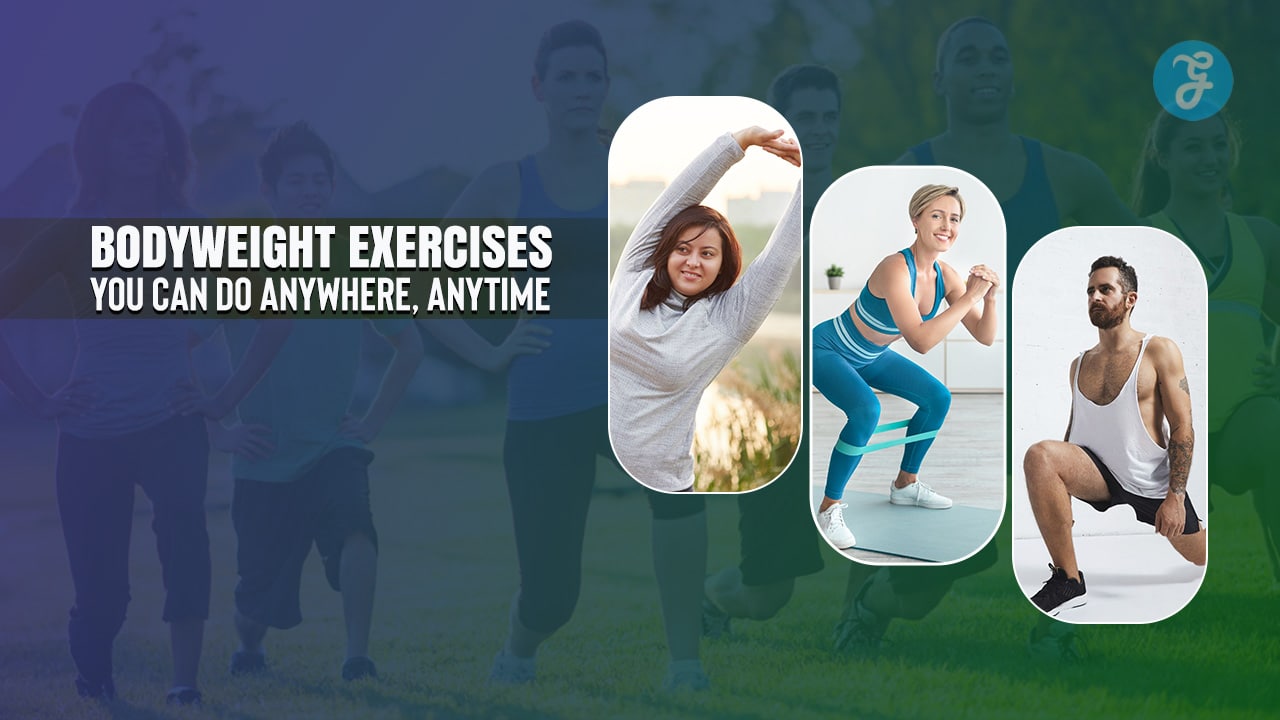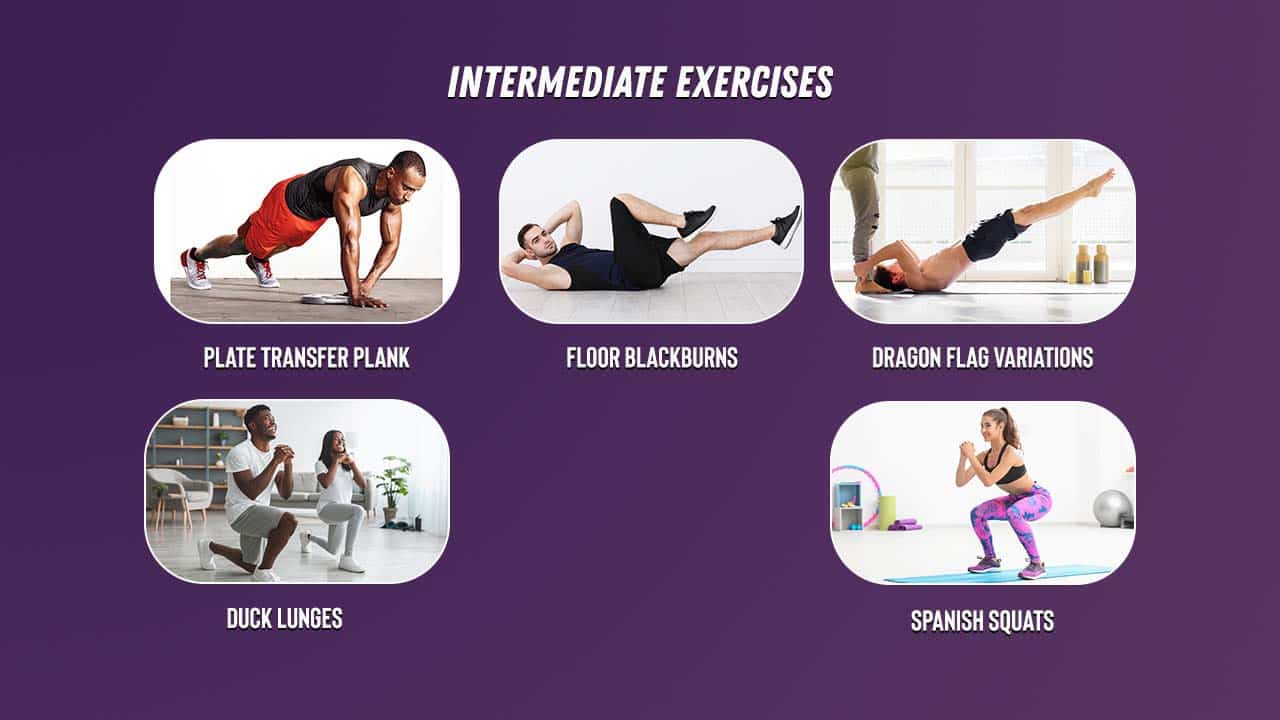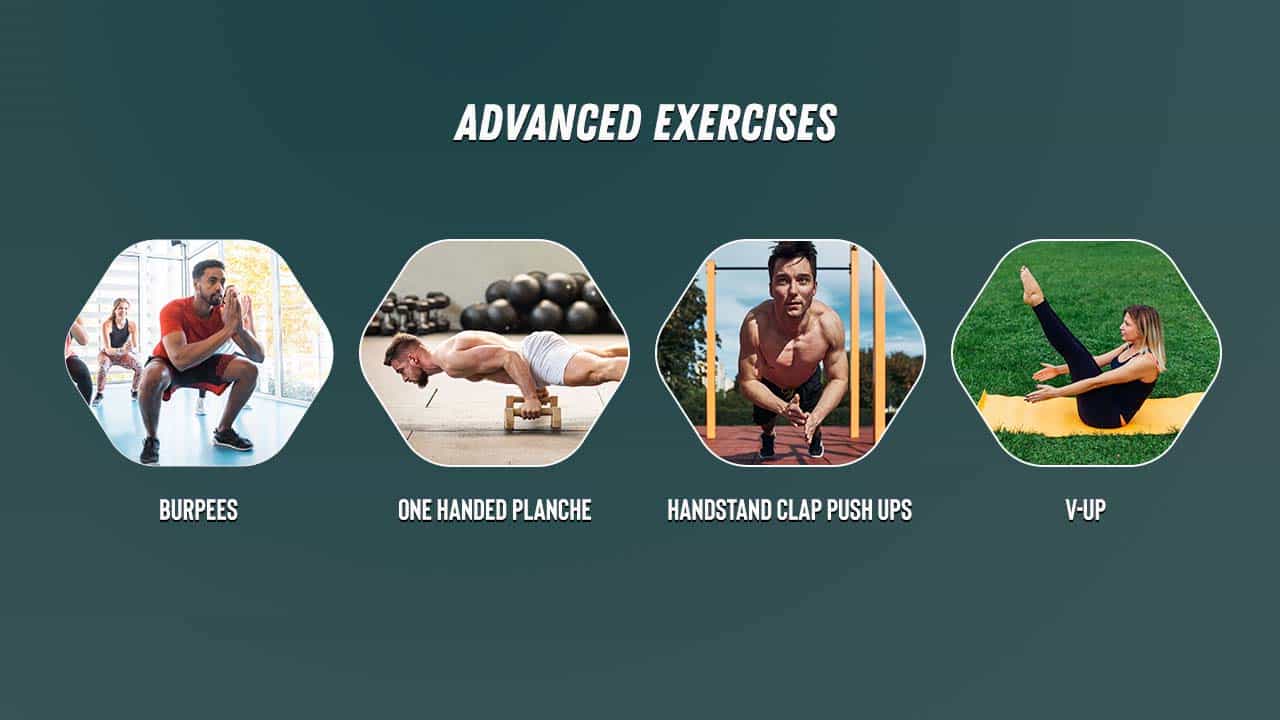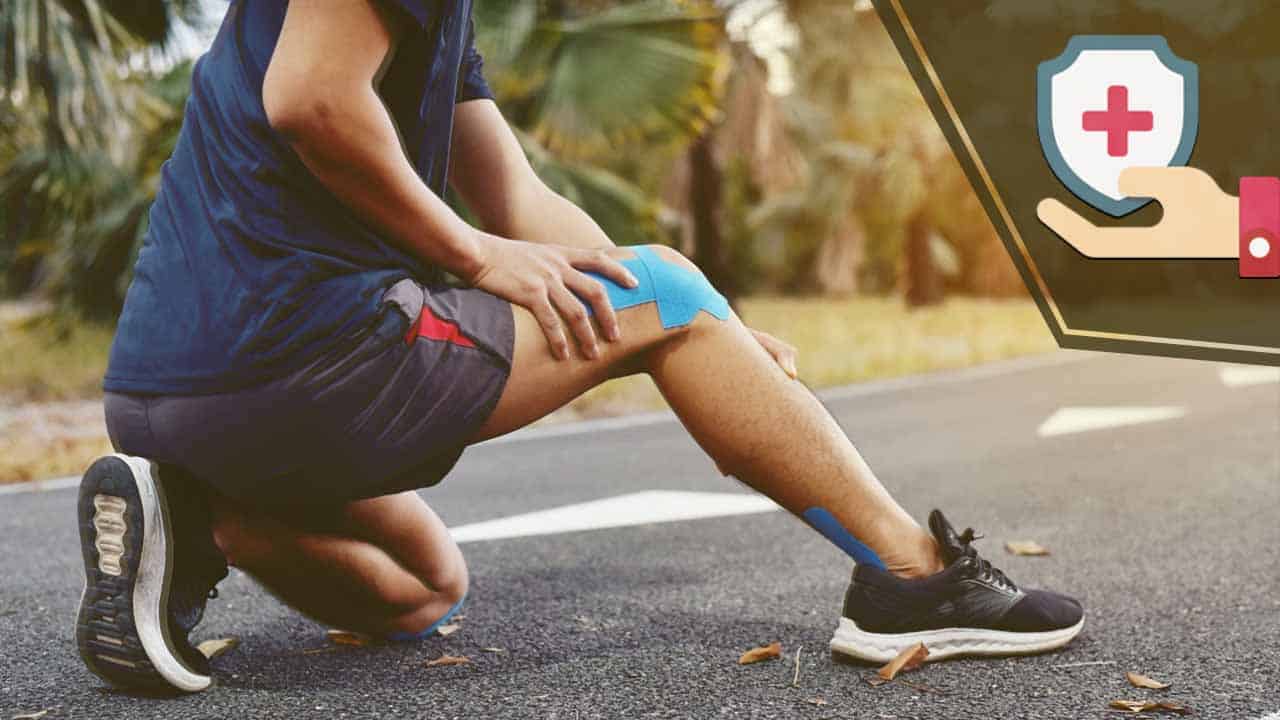In today’s fast-paced world, finding time to hit the gym can be a challenge. But what if you could stay fit without ever needing a gym? Bodyweight exercises you can do anywhere offer a versatile and effective way to build strength, endurance, and flexibility—no equipment required.
Whether you’re at home, in a park, or on the go, these exercises can be done anywhere, anytime. In this guide, we’ll explore some of the best bodyweight exercises you can do anywhere and incorporate into your routine to stay in shape, no matter where life takes you.
What are Bodyweight Exercises?
Like any other exercises, the bodyweight ones offer targeted yet plenty of advantages. They don’t even need that heavy equipment as a tool, so it’s quite an accessible and cost-effective way to be fit and healthy. perform them anywhere, anytime, whether at home, in a park, or while traveling.
Body weight exercises improve functional strength, enhance body awareness, and promote balance and flexibility. They’re scalable for all fitness levels, from beginners to advanced athletes. As it provides cardiovascular benefits when done in high-intensity circuits, as well as fat burning advantages.
Bodyweight Exercises You Can Do Anywhere
Bodyweight exercises use resistance to build body strength and connections. The varieties they offer, allowing for diverse routines that target all major muscle groups.
These bodyweight exercises you can do anywhere. Most importantly, these exercises are time-efficient, often working multiple muscle groups simultaneously for effective full-body workouts in less time. Let’s check them out.
Beginner Exercises
Starting a fitness journey can be intimidating, but bodyweight exercises offer an accessible and effective way to build strength, improve flexibility, and boost overall health. These beginner-friendly routines focus on fundamental movements that form the building blocks of fitness.
1. Light push-ups:
This one works on your shoulder, chest and core to keep your back and core in connection.
- start in a high plank position
- Hands shoulder-width apart, fingers spread
- Body forms a straight line from head to ankles
- Lower your body by bending elbows (at a 45-degree angle to torso)
- Aim to touch chest to ground
- Push back up to starting position
- Maintain straight body alignment throughout
2. Superhuman:
This one is to strengthen your back, and try to do quality of movement rather than quantity. Stop at any moment if you feel any back pain or discomfort while doing the exercise.
- Lie face down on the floor with your legs straight and your arms extended overhead.
- Keep your palms facing each other and look at the floor for a neutral spine.
- Engage your core muscles.
- Simultaneously lift your legs, upper body, and arms a few inches off the floor.
- Hold this raised position for two seconds.
- Slowly lower everything back to the starting position.
- Repeat for the desired number of repetitions.
3. Squats:
Benefit of doing squats: Squats primarily target your quads while also engaging glutes, hamstrings, calves, and core.
- Stand with feet hip-width apart
- Keep chest up and core engaged
- Place hands on hips for balance
- Lower body by pushing hips back and bending knees
- Lower as far as comfortable (aim for thighs parallel to ground)
- Ensure knees align with toes
- Pause briefly at the bottom
- Press through feet to return to standing
- Repeat for 2 sets
Intermediate Exercises
If you’ve been consistently working out and feel comfortable with basic bodyweight movements, it’s time to step up your game with intermediate exercises.
These routines build upon foundational techniques, introducing more complex variations and combinations to challenge your strength, endurance, and coordination,
4. Plate Transfer Plank
Enhances core stability while adding a dynamic element to improve balance and coordination.
- Start in a high plank position with hands shoulder-width apart.
- Place a small weight or object to one side of your body.
- Maintaining a stable plank, reach across with your free hand to grab the object.
- Transfer the object to the other side of your body.
- Return your hand to the starting position.
- Repeat the transfer with the opposite hand.
- Continue alternating for the desired number of repetitions.
5. Floor Blackburns
Strengthens the posterior chain, particularly the lower back, glutes, and shoulders, improving posture and reducing risk of back pain.
- Lie face down on the floor with arms extended overhead.
- Lift your chest, arms, and legs slightly off the floor.
- Hold this position for a moment.
- Bring your arms down to your sides, squeezing your shoulder blades together.
- Return arms to the overhead position.
- Lower chest, arms, and legs back to the floor.
- Repeat for the desired number of repetitions.
6. Dragon Flag Variations
Intensely works the entire core, including deep abdominal muscles, while also engaging the lower back and hip flexors.
- Lie on your back on a bench or mat.
- Grip a sturdy object behind your head for support.
- Raise your legs and lower back off the ground, keeping your body straight.
- Slowly lower your body back down, maintaining a straight line.
- Stop when your lower back touches the ground.
- Return to the starting position and repeat.
7. Duck Lunges
It primarily targets the quadriceps, hamstrings, and glutes while also engaging the core and improving balance and coordination. This exercise is excellent for developing lower body strength and mobility, particularly in the hip flexors.
- Start by standing with your feet hip-width apart, arms at your sides.
- Take a large step forward with your right foot, lowering your body into a lunge position.
- As you lunge, bend your torso forward and reach both hands towards the floor on either side of your right foot.
- Keep your back straight and core engaged throughout the movement.
- Push off your right foot to return to the starting position, but instead of stepping back, bring your right foot through and forward, directly into the next lunge.
- As you transition, swing your arms back behind you for momentum and balance.
- Continue this walking lunge pattern, alternating legs with each step.
- Aim to keep a continuous, fluid motion throughout the exercise.
- Perform for a set distance (e.g., 20 meters) or for a specific number of repetitions per leg.
- Remember to maintain control and balance throughout the exercise.
8. Spanish Squats
Targets the quadriceps while reducing stress on the lower back, making it an excellent exercise for those with back issues or building leg strength.
- Loop a resistance band around a sturdy anchor point at about waist height.
- Step into the band so it’s behind your knees.
- Walk forward to create tension in the band.
- Stand with feet shoulder-width apart.
- Keeping your chest up, lower your body as if sitting back into a chair.
- Go as low as comfortable, ideally until thighs are parallel to the ground.
- Push through your heels to return to the starting position.
- Repeat for the desired number of repetitions.
Advanced Exercises
For those who have mastered the basics and are looking to push their limits, advanced bodyweight exercises offer an intense challenge that can rival any gym workout.
These exercises demand a high level of strength, balance, and body control, often incorporating complex movements that engage multiple muscle groups simultaneously,
9. Burpees
Full-body exercise that improves cardiovascular fitness, strength, and coordination while burning calories.
- Start in a standing position.
- Drop into a squat position with your hands on the floor.
- Kick your feet back, landing in a plank position.
- Do one push-up.
- Jump your feet back to your hands.
- Explode upward into a jump, reaching your arms overhead.
- Land softly and immediately begin the next rep.
10. One-Handed Plenches
Extremely advanced move that develops exceptional upper body and core strength, particularly in the shoulders, chest, and arms.
- Start in a one-arm push-up position.
- Shift your weight forward onto your supporting arm.
- Engage your core and squeeze your legs together.
- Lean forward, balancing your entire body on one arm.
- Lift your legs off the ground, keeping them straight.
- Hold this position, balancing your body parallel to the ground.
11. Handstand Clap Push-Ups
Builds incredible upper body strength, balance, and coordination. Keep in mind that this is an expert-level move that requires mastery of handstands and pushups.
- Start in a handstand position against a wall for support.
- Lower your body by bending your arms, keeping your body straight.
- As you push explosively upward, remove your hands from the ground.
- Clap your hands together.
- Quickly place your hands back on the ground to catch yourself.
- Lower back down into the next rep.
12. V-up
Strengthens the entire core, particularly the lower abs and hip flexors.
- Lie on your back with arms extended overhead and legs straight.
- Simultaneously lift your arms and legs off the ground.
- Raise your upper body and legs, reaching your hands towards your toes.
- Your body should form a “V” shape at the top of the movement.
- Slowly lower back to the starting position.
- Repeat for the desired number of repetitions.
Sample Workout Routines for Beginners
This beginner bodyweight routine should be performed 2-3 times per week, ensuring at least one day of rest between sessions to allow for proper recovery. If you find yourself unable to complete all the prescribed repetitions, focus on maintaining good form and do as many as you can manage. The routine progresses gradually over Weeks 2 and 3 with increased repetitions, but feel free to adjust based on your individual progress and comfort level.
| Exercise | Week 1 | Week 2 | Week 3 | |||
| Sets | Reps | Sets | Reps | Sets | Reps | |
| Push-Ups | 3 | 15 | 3 | 18 | 3 | 20 |
| Inverted Rows | 3 | 10 | 3 | 12 | 3 | 15 |
| Diamond Push-Ups | 3 | 10 | 3 | 12 | 3 | 15 |
| Deep Squats (3 Second Pause At Bottom) | 3 | 15 | 3 | 18 | 3 | 20 |
| Single-leg Calf Raises | 3 | 15 | 3 | 18 | 3 | 20 |
| Stationary Lunges | 3 | 10 | 3 | 12 | 3 | 15 |
| Lying Leg Raises | 3 | 10 | 3 | 12 | 3 | 15 |
| Floor Crunches | 3 | 10 | 3 | 15 | 3 | 20 |
Sample Workout Routines for Intermediates
When engaging in this intermediate bodyweight routine, it’s crucial to always prioritize proper form over the quantity of repetitions. Begin each session with a thorough warm-up to prepare your muscles and joints, and conclude with a cool-down to aid in recovery, stay well-hydrated and pay close attention to your body’s signals.
Feel free to adjust the routine based on your individual progress and recovery needs. For optimal results and to allow adequate recovery time, perform this routine 3-4 times per week, ensuring at least one full day of rest between sessions.
This approach will help you maximize the benefits of your workouts while minimizing the risk of injury or overtraining.
| Exercise | Week 1 | Week 2 | ||
| Sets | Reps | Sets | Reps | |
| Feet Elevated Push-Ups | 4 | 15 | 4 | 18 |
| Medium-Width Grip Pull-Ups | 4 | 10 | 4 | 12 |
| Feet Elevated Diamond Push-Ups | 4 | 10 | 4 | 12 |
| Rear-Foot Elevated Bulgarian Split Squats | 4 | 10 | 4 | 12 |
| Jump Squats | 4 | 10 | 4 | 12 |
| Single Leg Calf Raises | 4 | As many possible | 4 | As many possible |
| Decline Board Crunches | 4 | 10 | 4 | 15 |
| Hanging Leg Raises | 4 | 10 | 4 | 12 |
Sample Workout Routines for Advanced
This advanced bodyweight workout routine should be performed 3-4 times per week, ensuring at least one full day of rest between sessions to allow for adequate recovery. It’s crucial to begin each workout with a thorough warm-up to prepare your body for the intense exercises ahead, and to conclude with a proper cool-down to aid in recovery.
| Exercise | Week 1 | Week 2 | ||
| Sets | Reps | Sets | Reps | |
| Feet Elevated Push-Ups | 3 | 15 | 4 | 15 |
| Medium or Wide-Grip Pull-Ups | 3 | 10 | 4 | 10 |
| Parallel Bar Dips or Bench Dips | 3 | 15 | 4 | 15 |
| Reverse-Grip Chin-Ups | 3 | 10 | 3 | 12 |
| Rear-Foot Elevated Bulgarian Split Squats | 3 | 10 | 3 | 12 |
| Reverse Lunges | 3 | 10 | 3 | 12 |
| Box Jumps | 3 | 10 | 3 | 12 |
| Single Leg Calf Raises | 3 | 15 | 3 | 20 |
| Bicycle Crunches | 3 | 15 | 3 | 20 |
| Lying Leg Raises | 3 | 15 | 3 | 20 |
Safety Considerations
When engaging in bodyweight exercises, it’s crucial to prioritize safety to ensure an effective and injury-free workout routine. Always focus on maintaining proper form and alignment, gradually progressing in difficulty as you master basic movements. Begin each session with a thorough warm-up and end with a cool-down to prepare your body and aid recovery.
Listen to your body, stopping if you experience sharp pain or discomfort, and allow adequate rest between workouts. Ensure you have a safe, non-slip environment with enough space to perform exercises. Stay hydrated and maintain proper breathing throughout your routine. If you have pre-existing health conditions, consult a healthcare professional before starting a new exercise program.
Takeaways
And that was a full rundown for you to do full bodyweight exercises you can do anywhere, anytime you want, considering your levels and capacity of working out. Make sure to always start slow with less intrusive exercises, as bodyweight uses your own weight to build muscles, strength, flexibility and more.








































